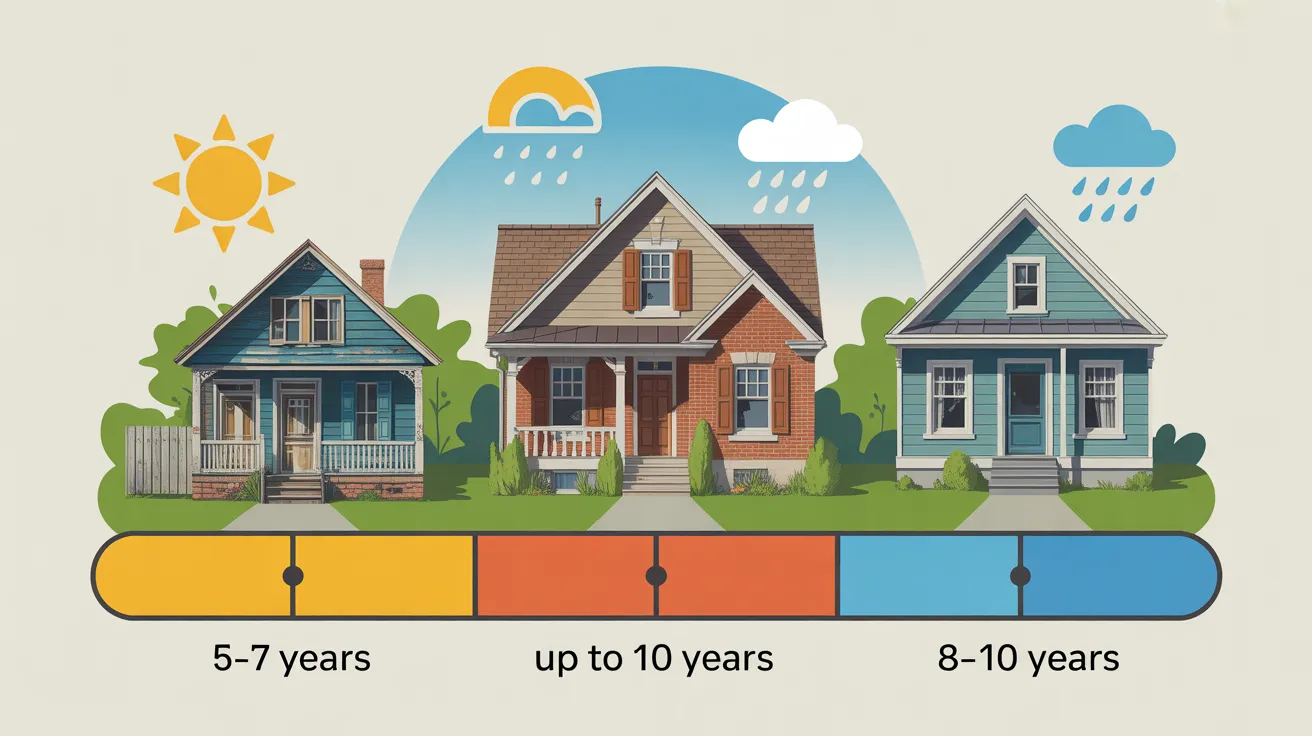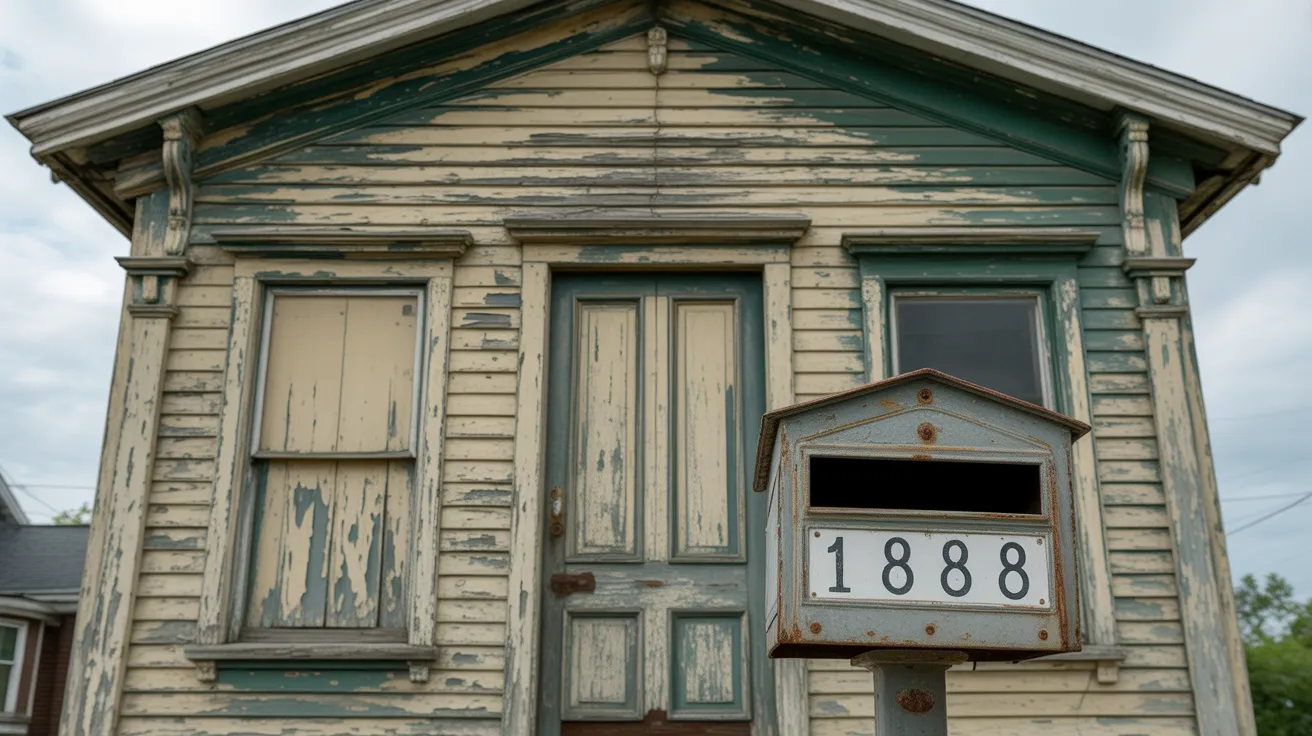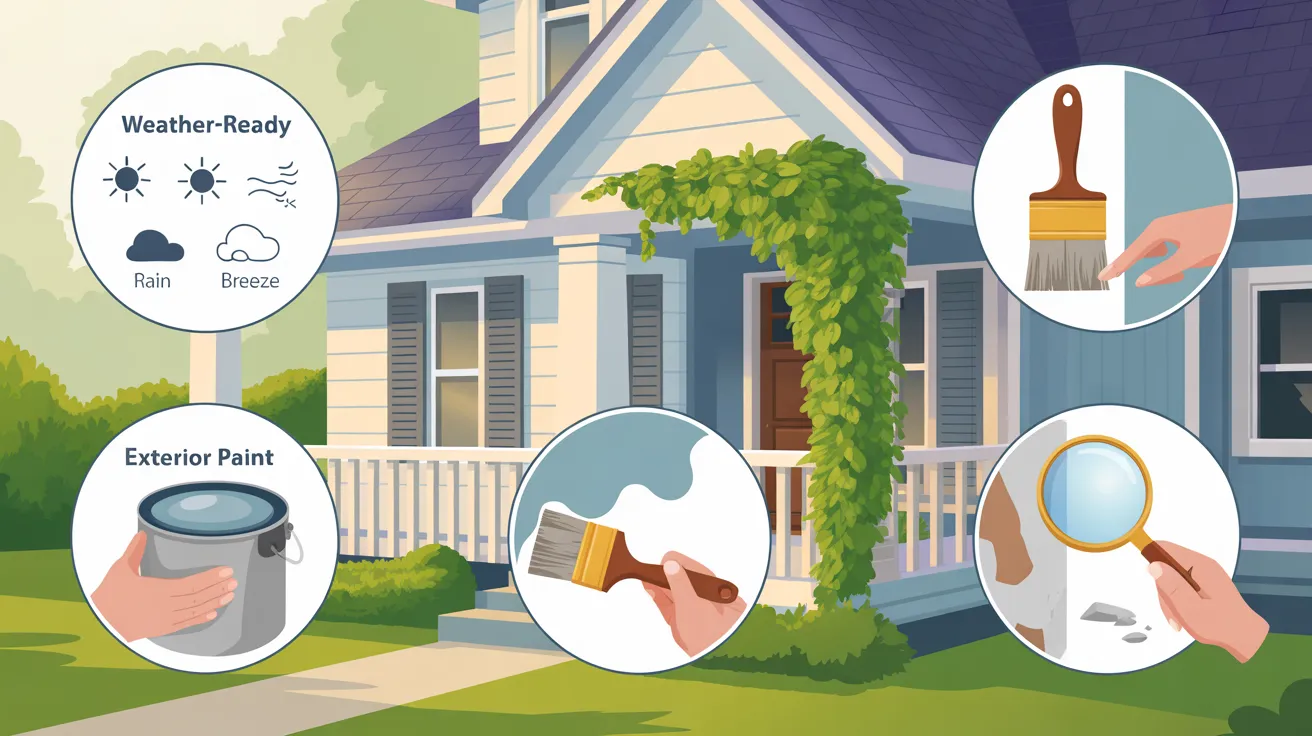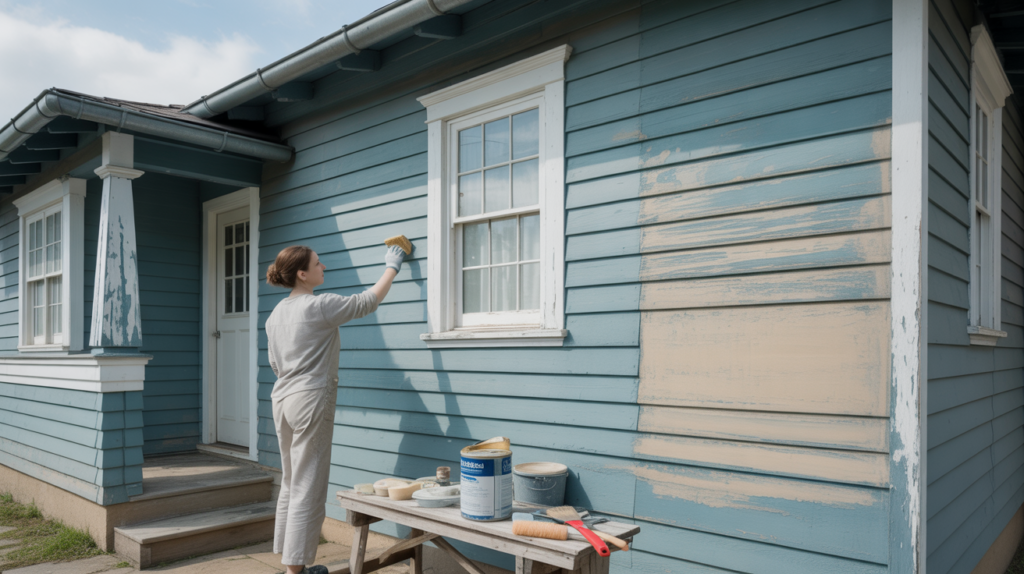Ever wonder, “Is it time to repaint my house?” You’re not alone. Repainting takes time, money, and effort, so it’s smart to know how long exterior paint lasts.
I’ll help you understand how long paint lasts in good condition and what factors affect its lifespan, such as weather, surface type, paint quality, and habits that can make a significant difference.
It’s not just about looks, it’s also about protecting your home. I’ve kept things simple so you can plan for repainting with confidence.
Let’s figure out how to keep your home looking great and well-protected without unnecessary effort.
How Long Does Exterior Paint Last?

Exterior paint usually lasts between 5 to 10 years, but that number can change depending on a few things.
Some homes need new paint after just 5 years, while others still look good after 10 years or more.
The type of surface matters. For example:
- Wood often needs repainting sooner, about every 5 to 7 years.
- Stucco and brick can last longer, up to 10 years.
- Vinyl siding may only need paint every 8 to 10 years.
The weather where you live also plays a big role. If your home faces a lot of sun, rain, or snow, the paint may wear out faster.
Even the paint you use makes a difference. Better-quality paint usually lasts longer and protects your home better.
So, while there’s no one-size-fits-all answer, knowing what affects paint life can help you plan ahead.
What Affects How Long Exterior Paint Lasts?
Several things can change how long your exterior paint stays in good shape. Here’s what matters most:
- Surface Type: Different materials hold paint differently. Wood usually needs repainting sooner, while brick or stucco can last longer.
- Weather and Climate: Homes in areas with strong sun, heavy rain, snow, or salty air tend to have paint that wears out faster.
- Paint Quality: High-quality paint lasts longer, looks better, and protects your home more. Cheaper paint may peel or fade quickly.
- How It Was Painted: If the surface was cleaned, primed, and painted the right way, the paint will stay on better and last longer.
- Maintenance: Simple care, like washing the walls and fixing small chips, helps the paint look good for more years.
Signs It’s Time to Repaint

Sometimes it’s hard to know when your house needs new paint. Here are some clear signs to look out for:
- Peeling or Cracking: If the paint is coming off or breaking into flakes, it’s no longer doing its job.
- Fading: Colors that once looked bright may now look dull. Sunlight can fade paint over time.
- Stains or Dark Spots: Mold, mildew, or water stains can show up on old paint, especially in damp areas.
- Chalky Feel: If you rub your hand on the wall and it leaves white dust, the paint is wearing out.
- Bare Spots: If you see parts of the wall with no paint at all, it’s time to repaint.
When to Call a Professional Painter
Sometimes, a few touch-ups are all you need- but not always. If you notice a lot of peeling, cracking, or spots that keep getting worse, it may be time to bring in a professional.
Painters also come in handy when parts of your home are hard to reach, like high walls or roof edges.
If you’re unsure about which paint to use, how to fix damage, or what steps to take, a pro can help you get it right.
Hiring a professional means the job gets done faster and often looks better.
They know how to prepare surfaces properly, choose the right paint, and apply it in a way that lasts longer.
In the end, calling a painter can save you time and effort and give your home a fresh, clean look that lasts.
Tips to Extend the Life of Exterior Paint

Want your paint job to last as long as possible? Here are some simple tips that can help:
- Choose the Right Paint for Your Area: Some paints are made to handle heat, rain, or salty air. Picking the right one for your climate makes a big difference.
- Prepare the Surface Well: Before painting, clean the walls, sand rough spots, and use a primer. This helps the paint stick better and last longer.
- Use Paints Meant for Outdoor Weather:Make sure the paint is made for the outdoors and can handle sun, rain, and other weather changes.
- Check Your Walls Regularly: Look for small chips, cracks, or stains every few months. Fixing them early can stop bigger problems later.
Conclusion
Keeping your home’s paint in good shape doesn’t have to be hard.
Now that you know how long exterior paint usually lasts and what affects it, you can plan better and avoid surprises.
I hope this helped you see when it might be time to repaint and why small care steps matter so much.
From choosing the right paint to checking your walls once in a while, these simple actions can make a big difference.
If your paint is peeling, fading, or showing signs of wear, don’t wait too long. A fresh coat not only makes your home look better, but it also protects it from the weather and damage.
And if the job feels too big, there’s no harm in calling a professional to help.
I believe good paint care is one of the easiest ways to keep your house strong and looking great for years.
Frequently Asked Questions
How often should I repaint my house exterior?
Most homes need repainting every 5 to 10 years. It depends on the surface, paint quality, and weather where you live.
Does paint last longer on certain materials?
Yes. Paint on brick or stucco can last longer than paint on wood. Smooth surfaces usually hold paint better than rough ones.
Can I paint over old paint, or do I need to strip it first?
You can paint over old paint if it’s in good shape-clean, dry, and not peeling. If it’s peeling or cracked, you’ll need to scrape and sand it first.
What’s the best season for exterior painting?
Mild, dry weather is best. Spring and early fall usually work well, as long as it’s not too hot, cold, or rainy.

